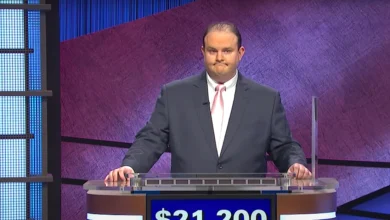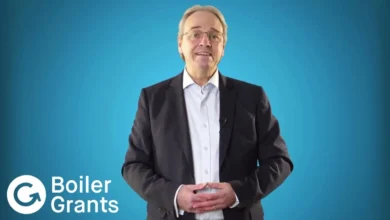What It Means to Be a YouTuber — A Deep Dive into Content, Growth & Success

Being a YouTuber is more than just uploading videos — it’s building a brand, engaging an audience, and optimizing for discoverability. In this article, we explore the world of YouTubers, how they grow, what challenges they face, and how you can succeed too.
the Definition & Roles of a YouTuber
A YouTuber is someone who creates, publishes, and often monetizes content on YouTube. But that simple definition hides many facets. Let’s break down what being a YouTuber involves today:
-
Content creator + curator: A YouTuber usually plans out ideas, scripts or rough outlines, films, edits, and publishes videos. They also choose what to include, what to omit, and how to sequence their content.
-
Brand & persona: The successful YouTuber builds a recognizable voice, style, and niche—whether gaming, tech, education, beauty, commentary, or vlogging.
-
Community manager: Responsible for interacting with viewers via comments, polls, social media, and community posts.
-
Analyst & optimizer: They constantly monitor metrics (watch time, click-through rate, retention) and adjust accordingly.
-
Monetizer / business operator: Many YouTubers earn via ads (YouTube AdSense), sponsorships, brand deals, affiliate marketing, merchandise, memberships, or other monetization strategies.
Not every YouTuber does all these roles themselves (some hire editors, social media managers, etc.), but understanding each piece is crucial. Essentially, a YouTuber is a creator, entrepreneur, and marketer all at once.
How to Start & Grow as a YouTuber
Starting is often the hardest part, but growth depends heavily on consistency, strategy, and understanding your audience. Here’s a roadmap:
-
Find your niche / content focus
Choose a topic or category you are passionate about and that has an audience (e.g. tech reviews, tutorials, lifestyle, gaming). Don’t spread across dozens of unrelated genres at first—niching helps gain loyal viewers. -
Plan content & schedule
Create a content calendar. Decide how many videos per week/month. Consistency is a major factor in audience retention. Reddit threads show creators often say “have a schedule” is key. -
Learn the basics of video production
Quality matters (audio, video, lighting). But early on, focus on clarity and usefulness over polish. Use free or inexpensive editing tools to begin with. -
SEO & discoverability from day one
Each video should be optimized: target keywords in title, description, tags, and transcript. YouTube SEO practices remain critical -
Thumbnails & attention hooks
People click based on thumbnail and title first. Create eye-catching, clear thumbnails that reflect the content (but avoid misleading “clickbait”) -
Engage with your audience
Ask viewers to like, comment, and subscribe. Respond to comments. Use pinned comments or polls to spark interaction. Engagement helps the algorithm promote your video. -
Iterate via analytics
Use YouTube Analytics to see retention graphs, drop-off points, and traffic sources. If many viewers leave at 30 seconds, improve your intro. Adapt and refine. -
Promotion outside YouTube
Share videos on social media, forums, blogs, embed in websites. Collaborate with other creators to reach new audiences.
Over time, as your channel stabilizes, consider diversifying content, launching series, or branching into merchandise, memberships, or other platforms.
YouTube SEO: How to Rank & Be Discovered
SEO (Search Engine Optimization) is as important on YouTube as it is on Google, especially because YouTube is itself a powerful search engine. Below are critical strategies to make your content discoverable:
Keyword research & placement
-
Identify target keywords / phrases that people actually search for in your niche. Use tools, YouTube’s autocomplete, or competitor analysis.
-
Use your main keyword in the video file name before uploading (e.g.,
how_to_edit_photos.mp4) to signal relevance. -
Insert keywords in the title, ideally at the beginning. Use supporting keywords later.
-
In the description, include your primary keyword in the first two or three sentences. Write 200–300+ words describing the video. Include links, relevant content, calls to actionUse tags effectively: start with the main tag, then synonyms, related keywords, and broader category tags.
Thumbnails, engagement & retention
-
Thumbnails are visual “advertisements” of your video. An appealing thumbnail can increase your click-through rate (CTR), which signals YouTube to promote your video.
-
Encourage engagement (likes, comments, shares) inside the video and via call-to-action in description. The algorithm favors videos with high engagement.
-
Watch time and retention are critical ranking signals. If people leave early, your video is less likely to be promoted. Use hooks, good pacing, and strong structure.
Captions, transcripts & closed captioning
-
Adding captions (SRT / closed captions) and transcripts helps YouTube (and Google) “read” your content, improving discoverability and accessibility.
-
YouTube’s auto-captions are imperfect; editing them ensures better accuracy and keyword presence.
Additional SEO tactics
-
Use chapters / timestamps in descriptions so users (and algorithms) can see structured content.
-
Organize your channel using playlists and sections so related content is grouped.
-
Use end screens and cards to link to related videos, encouraging further viewing (which boosts session time).
-
Monitor traffic sources (search, suggested, external) to understand which content performs best.
By working consistently on SEO, you give your videos the best chance to be surfaced and discovered over time.
Monetization Strategies & Revenue Sources
Once your channel is established and you have a steady audience, monetizing becomes possible. Here are common revenue streams for YouTubers:
YouTube Partner Program (Ads / AdSense)
Once you meet YouTube’s requirements (e.g. a number of subscribers and watch hours), you can enable AdSense monetization. Then you earn money via ads shown before, during, or after your video. Earnings depend on CPM (cost per thousand views) and viewer region.
Sponsorships & Brand Deals
Brands may pay you to feature their product, review it, or mention it in your content. As your reach increases, opportunities for sponsored videos grow.
Affiliate marketing
You can promote products or services via affiliate links, earning a commission on sales generated via your link. This works well when integrated naturally (e.g. “Link to camera gear I use in description”).
Channel memberships / Patreon / subscriptions
Offer exclusive content, early access, badges, or perks for viewers who pay a recurring monthly membership. This builds a stable base of income.
Merchandise & products
Many YouTubers sell branded merchandise (t-shirts, mugs, phone cases) or even digital products like eBooks, courses, presets, templates, etc.
Paid consulting or services
If your content area allows it (e.g. consulting, coaching, design, education), you might offer services based on your expertise.
Licensing / syndication
If you produce high-quality content, you could license your videos to media outlets or platforms for additional revenue.
One important note: diversification is key. Relying purely on ad revenue is risky (ad rates fluctuate, policy changes happen). Successful YouTubers often combine multiple income streams.
Challenges & Pitfalls YouTubers Face
Being a YouTuber comes with many rewards—but also challenges, many of which are not obvious when you first start. Let’s examine common pitfalls and how to mitigate them:
Algorithm dependence & volatility
YouTube’s recommendation and ranking algorithms change over time. A strategy that works today might become less effective tomorrow. A video that performed well in the past may be downgraded later. Staying updated with algorithm trends is essential.
Burnout & content fatigue
Creating regular, high-quality content is demanding. Many creators face burnout, creative blocks, and pressure to constantly top previous performance. Maintaining sustainability is key.
Copyright & strikes / demonetization
Using music, clips, or content without permission can lead to copyright claims or takedowns. Violations of YouTube policies can result in demonetization or removal of videos. Always use licensed content or royalty-free materials.
Audience expectations & backlash
As a YouTuber becomes known, audience expectations grow. Switching formats or changes in style can cause backlash or loss of fans if not managed carefully.
Income instability
Revenue from ads or views can fluctuate month to month. Sponsorships may dry up, and algorithm changes or policy shifts can suddenly impact earnings. That’s why diversifying income is crucial.
Trolling, toxicity & harassment
Popular YouTubers often face negative comments, harassment, or hate spam. Moderation, community rules, and support systems become necessary.
Scaling operations
As your channel grows, simple one-person setups may no longer suffice. You might need to hire editors, graphic designers, social media managers—managing that growth is a challenge in itself.
Understanding these pitfalls helps you plan ahead and build resilience so your channel doesn’t collapse under pressure.
Success Stories & Lessons from Top YouTubers
To draw inspiration and learn principles that work, let’s look at a notable YouTuber and extract lessons.
Case Study: Austin Evans
Austin Evans is an American tech YouTuber, blogger, and gadget reviewer.
-
He started by posting videos about iPod Touch apps, then gradually moved into tech reviews, comparisons, and component builds.
-
His consistent niche (tech + gadgets) allowed him to build authority.
-
Over time, he amassed over 5.65 million subscribers and billions of total views.
Lessons from Austin’s journey:
-
Niche consistency helps build authority
Focusing on tech, Evans developed credibility over time. -
Gradual evolution
He didn’t start with complex content. He began simple, then expanded scope as his skills and audience grew. -
Quality builds trust
Honest reviews, transparency, and consistency earned him trust among followers and brands. -
Diversification & brand presence
Beyond YouTube, presence in tech media, collaborations, and community relationships strengthened his brand. -
Staying relevant & adaptive
He adapts to new tech trends (phones, PCs, GPUs) and keeps updating content themes.
Studying successful YouTubers like Evans reveals patterns: niche focus, consistency, adaptation, and quality trust-building.
Conclusion
Being a YouTuber today is much more than filming videos—it’s running a personal brand, community, and business. Success hinges on smart content, strong SEO, consistent engagement, diversified monetization, and adaptability.
By understanding the roles, strategies, pitfalls, and lessons from top creators, aspiring YouTubers can chart a path forward. Whether you aim for 1,000 subscribers or millions, the foundations remain: value for your audience + persistence + smart optimization.
If you like, I can also write a step-by-step guide tailored to beginners (with video ideas, schedule templates, tools), or a comparative analysis of niches. Which one would you prefer next?
5 FAQs About YouTubers
-
How long does it take to grow a successful YouTube channel?
It depends heavily on niche, quality of content, SEO, and consistency. Some channels gain traction in months; many take years. Expect slow growth early. -
Do YouTubers still need to follow SEO in 2025?
Yes — SEO is still important because it helps with discoverability via search and influences recommendation algorithms. -
Can a YouTuber succeed without showing their face?
Absolutely. Many creators use voiceover, animation, screen recordings, or faceless formats (e.g. tutorials, slideshows). The key is strong content and engagement. -
What’s more important: quality or quantity?
Both have roles. Early on, quantity (consistency) helps, but over time quality becomes more critical. Viewers expect better production and polish as a channel matures. -
How can I protect my content from theft or plagiarism?
You can copyright your videos, use watermarks, monitor reuploads, issue takedown notices (via YouTube’s Content ID), and maintain records of original content creation.




